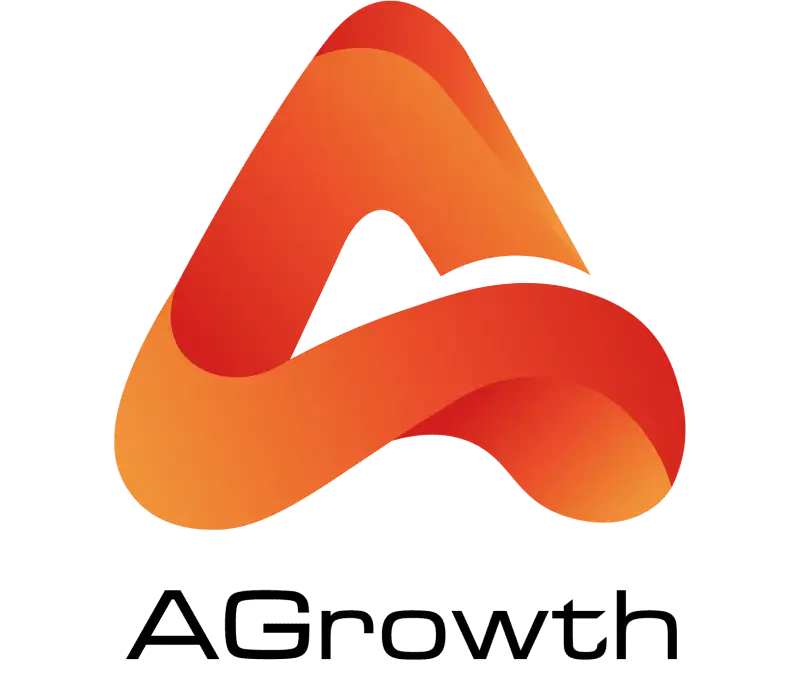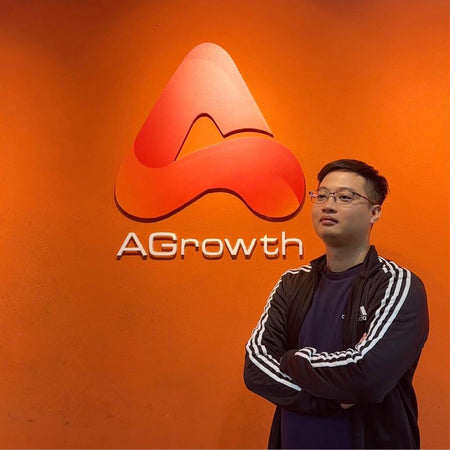
Table of Contents
Facebook Ads Learning Phase: What It Means and How to Master It
If you’ve run Facebook ads for a while, you’ve likely seen the status “Learning” or “Learning Limited” inside Ads Manager. This isn’t an error—it’s part of how Meta’s algorithm gathers data to optimize delivery. The Facebook Ads Learning Phase is when the system tests different audience segments and placements to understand where your ad performs best.
This comprehensive guide will move beyond the basics to provide an in-depth exploration of the Facebook Ads learning phase. We will dissect what it is, what triggers it, and how to navigate it effectively. You'll learn the best practices to not only survive but thrive during this period, what to do if your ad sets get stuck, and what glorious stability awaits on the other side.
What is the Facebook Ads Learning Phase?
According to Meta Business Help, the learning phase is the period when the delivery system is exploring the best way to deliver your ad set – so performance may be less stable during this time.”
In practice, this means:
-
Facebook’s algorithm is testing different pockets of your audience.
-
It is adjusting bidding and placements.
-
You may see fluctuating CPMs, CPCs, and CPA until enough data is gathered.
What Causes You to Enter the Facebook Ads Learning Phase?
Several well-established triggers will undoubtedly send your ad set back into learning mode.
Changes to Targeting
Altering your audience demographics, interests, behaviors, or custom and lookalike audiences is a major change that will trigger a reset. The algorithm needs to learn how this new group of people will respond to your ads.
Ad Creative Modifications
Any change to your ad's creative elements, including images, videos, headlines, primary text, or call-to-action buttons, will initiate a new learning phase. The performance of a new creative is an unknown variable that the system must test.
Even small creative tweaks—like changing an image or video size—can restart the learning process. To ensure your visuals meet Meta’s specifications and avoid delivery disruptions, explore our updated guide to Facebook Ad Size.
Optimization Event Changes
If you change the event you're optimizing for (e.g., from 'Add to Cart' to 'Purchase'), the algorithm has to recalibrate its delivery to find people likely to complete the new desired action.
Adding a New Ad to an Ad Set
Introducing a new ad into an existing ad set will cause the entire ad set to re-enter the learning phase. The system needs to test the new ad's performance against the existing ones and re-optimize delivery accordingly.
Significant Budget Changes
While small, incremental budget adjustments (typically less than 20%) may not always trigger the learning phase, a substantial increase or decrease will. A large budget change alters the ad set's ability to compete in the auction and its delivery potential, requiring a new learning period.
Bid Strategy or Bid Amount Adjustments
Switching your bid strategy (e.g., from 'Lowest Cost' to 'Cost Cap') or making a significant change to your bid amount will reset the learning phase. These changes directly impact how the ad set competes in the auction.
Pausing an Ad Set for an Extended Period
If you pause your ad set for seven days or longer, it will re-enter the learning phase upon being reactivated. The auction environment and user behavior can change significantly in a week, rendering the previous learnings obsolete.

How do I know my Facebook ad is in the Learning Phase?
Inside Ads Manager, each ad set has a Delivery column. If you see the status Learning, that means the ad set is still optimizing.
Two important indicators:
-
Learning Phase: Actively gathering data; performance is unstable.
-
Learning Limited: The ad set hasn’t generated enough optimization events to exit learning, often due to low volume or narrow targeting.
You can also monitor:
-
High fluctuations in cost per result
-
Unstable delivery (some days good, some days poor)
During this stage, you may notice sudden spikes or drops in click-through rate (CTR), which is a key signal of audience engagement and ad relevance. If you want to learn more about how CTR impacts your campaign performance, check out our complete guide to Facebook Ads CTR.
How Long Does the Facebook Ads Learning Phase Last?
The duration of the Facebook Ads Learning Phase isn’t fixed; it depends on how quickly your ad set can generate the required optimization events. According to Meta Business Help, the learning phase occurs until the delivery system has gathered enough data to predict performance. This usually takes about 50 optimization events within 7 days.
Typical timeframe
-
Standard range: 3–7 days after launch, depending on daily budget and audience size.
-
High-volume campaigns: May exit learning in as little as 1–2 days if they achieve 50 conversions quickly.
-
Low-volume campaigns: May take longer than a week—or remain stuck in Learning Limited—if they don’t generate enough events.
Factors that influence duration
-
Optimization event volume – Choosing an event with low occurrence (like “Purchase” for a new store) can stretch learning.
-
Daily budget – Too low a budget means you won’t accumulate events fast enough.
-
Audience size – Narrow targeting restricts delivery, slowing event collection.
-
Edits during learning – Every significant change resets the phase, extending the timeline.
Best Practices While on the Facebook Learning Phase
Navigating the learning phase successfully requires a blend of patience and strategic restraint. The primary goal is to provide the algorithm with a stable environment to learn as efficiently as possible. Here are some best practices to follow, as recommended by Meta and experienced advertisers:
1. Avoid Making Significant Edits
This is the golden rule of the learning phase. As we've established, significant edits will reset the learning process, sending you back to square one. Once your ad set is live, resist the temptation to make knee-jerk reactions based on early performance data. Trust the process and allow the system the time it needs to optimize. If changes are absolutely necessary, try to batch them together to minimize the number of times you reset the learning phase.
2. Ensure Sufficient Budget and Volume
The learning phase is fueled by data, and data comes from conversions. Your budget needs to be large enough to generate a sufficient number of optimization events promptly. If you're optimizing for purchases and your average CPA is $25, a $10 daily budget will likely not be enough to exit the learning phase. You need to set a budget that can realistically achieve at least 50 optimization events within a week.
3. Choose the Right Optimization Event
Select an optimization event that occurs frequently enough to allow your ad set to exit the learning phase. If you're a new advertiser or have a product with a long consideration period, optimizing for 'Purchase' right away might be challenging. Consider optimizing for a higher-funnel event, such as 'Add to Cart' or 'View Content,' to gather enough data. Once your pixel is more seasoned and you have a better understanding of your conversion rates, you can then switch to optimizing for lower-funnel events.
4. Keep Your Audience Broad Enough
While precise targeting has its place, an overly restrictive audience can starve the algorithm of the data it needs. Start with a broader audience to give the delivery system more room to explore and find pockets of high-converting users. You can always refine your targeting later based on performance data. This is especially true with the advancements in Meta's AI and Advantage+ campaigns.
5. Consolidate Your Ad Sets
Avoid running too many ad sets with small, overlapping audiences. This can lead to your ad sets competing against each other (auction overlap) and prevent any single ad set from gaining enough traction. Consolidating your ad sets allows you to pool your budget and data, which can help you exit the learning phase faster and more consistently.
What if You Never Leave the Learning Phase?
Finding your ad sets perpetually stuck in "Learning Limited" can be a frustrating experience for any advertiser. It's a sign that the delivery system is unable to gather enough data to optimize performance fully. While it's not the end of the world, it does mean your campaigns are likely not running as efficiently as they could be.
When an ad set is in "Learning Limited," you can expect:
-
Performance Instability: Your results, including your CPA, will likely continue to fluctuate significantly. This makes it difficult to predict your return on ad spend and scale your campaigns effectively.
-
Higher Costs: Because the system hasn't fully optimized delivery, you may experience a higher cost per result than you would with an ad set that has exited the learning phase.
-
Reduced Delivery: Meta may limit the delivery of your ad set if it predicts that it won't be able to achieve the necessary optimization events.
However, being "Learning Limited" doesn't mean your campaign is a complete failure. The system is still learning and trying to find the best way to deliver your ads. But it's a clear signal that you need to take action to improve your campaign's setup.
If you find yourself in this situation, consider the following troubleshooting steps:
-
Consolidate Ad Sets: As mentioned earlier, merging similar ad sets can increase the volume of conversions for the remaining ad set, helping it to exit the learning phase.
-
Expand Your Audience: If your targeting is too narrow, broaden it to give the algorithm more people to work with.
-
Increase Your Budget: A higher budget can help you become more competitive in the auction and generate conversions more quickly.
-
Adjust Your Bid or Cost Control: If your bid is too low, you may be missing out on valuable impressions. Consider increasing your bid or switching to a different bid strategy.
-
Optimize for a More Frequent Event: If you're struggling to get enough high-value conversions, try optimizing for a more common, higher-funnel event to gather data.
AGROWTH - META AGENCY ACCOUNT
⭐ Managed campaigns with expert guidance
⭐ Flexible invoice-based billings, custom top-ups
⭐ High resistance to suspension via agency tier
⭐ Quick fund transfer to new account if needed
⭐ Priority support via Facebook Partner channel
⭐ Lower fees from 3%
What Happens After You Exit the Learning Phase?
Successfully exiting the learning phase is a significant milestone for any ad set. Once your ad set has achieved enough optimization events and its performance has stabilized, its status in the Delivery column will change to "Active". This is the state you want your ad sets to be in for the majority of their lifespan.
When your ad set is "Active," it means that Meta's delivery system has a much better understanding of who to show your ads to to achieve your desired outcome. This leads to several key benefits:
-
More Stable Performance: The wild fluctuations in CPA and other metrics that you saw during the learning phase will subside. Your results will become more predictable, allowing for more confident budget allocation and scaling.
-
Lower Cost Per Result: With optimized delivery, your cost per result should, on average, be lower and more consistent than it was during the learning phase. The system is now efficiently targeting users who are most likely to convert.
Once your campaigns stabilize, you’ll see more predictable and often lower costs per result. To better understand how Meta calculates ad pricing and what factors influence your spend, refer to our detailed breakdown of Facebook Ad Cost.
-
Improved Scalability: Once an ad set has exited the learning phase and is demonstrating stable performance, you can scale its budget with greater confidence. Small, incremental budget increases (around 10-20% every few days) are less likely to disrupt performance at this stage.
FAQs
Is it always bad to be in the learning phase?
No, the learning phase is a necessary and normal part of the ad delivery process. It's only a problem if your ad set gets stuck in "Learning Limited" and is unable to exit.
Can I make any changes at all during the learning phase?
While it's best to avoid significant edits, minor changes, such as small budget adjustments (under 20%), may not always reset the learning phase. However, it's generally recommended to wait until the learning phase is complete before making any optimizations.
If I have multiple ad sets in learning, will they affect each other?
Yes, if the ad sets are targeting similar audiences, they can compete against each other in the auction. This can make it harder for each ad set to get enough conversions to exit the learning phase. This is why ad set consolidation is often recommended.
Can I completely avoid the learning phase?
No, the learning phase is an inherent part of Meta’s delivery system. Every new ad set must pass through it to understand where your ads perform best. What you can avoid are unnecessary re-entries into the learning phase caused by excessive edits or fragmented campaigns.
You can minimize its impact by planning campaigns thoroughly, keeping ad sets stable, and using realistic budgets from the start. Check out the section How to Avoid the Learning Phase in this article for actionable steps.










Your comment